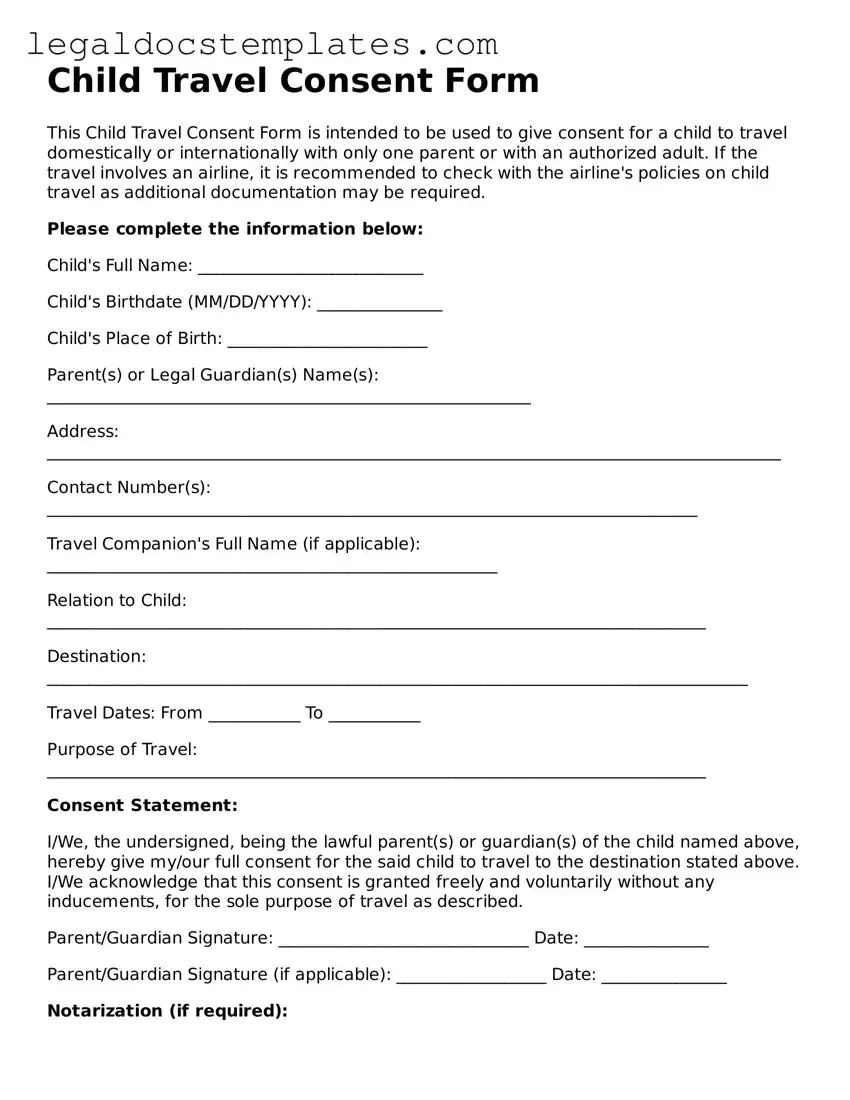Child Travel Consent Form
This Child Travel Consent Form is intended to be used to give consent for a child to travel domestically or internationally with only one parent or with an authorized adult. If the travel involves an airline, it is recommended to check with the airline's policies on child travel as additional documentation may be required.
Please complete the information below:
Child's Full Name: ___________________________
Child's Birthdate (MM/DD/YYYY): _______________
Child's Place of Birth: ________________________
Parent(s) or Legal Guardian(s) Name(s): __________________________________________________________
Address: ________________________________________________________________________________________
Contact Number(s): ______________________________________________________________________________
Travel Companion's Full Name (if applicable): ______________________________________________________
Relation to Child: _______________________________________________________________________________
Destination: ____________________________________________________________________________________
Travel Dates: From ___________ To ___________
Purpose of Travel: _______________________________________________________________________________
Consent Statement:
I/We, the undersigned, being the lawful parent(s) or guardian(s) of the child named above, hereby give my/our full consent for the said child to travel to the destination stated above. I/We acknowledge that this consent is granted freely and voluntarily without any inducements, for the sole purpose of travel as described.
Parent/Guardian Signature: ______________________________ Date: _______________
Parent/Guardian Signature (if applicable): __________________ Date: _______________
Notarization (if required):
This document was acknowledged before me on __________ (date) by ______________________________ (name(s) of parent(s) or legal guardian(s)).
_________________________________________
Signature of Notary Public
My Commission Expires: ___________________
This form does not include references to specific state laws as the requirements for child travel consent forms are generally consistent across the United States. However, it is advisable to consult with legal counsel or conduct further research to ensure compliance with any state-specific requirements or international travel regulations.
